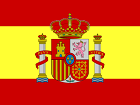The 10 major ports of Latin America
The 10 most important ports for storage capacity, transshipment and infrastructure make Latin America one of the regions of highest growth and importance for international trade. Its most important ports are:
1. Colon and Balboa (Panama):
Colon the Atlantic Giant is located at the Caribbean entrance of the Panama Canal and includes MIT (Manzanillo International Terminal), the largest transshipment port in Latin America and one of the most modern in the world, the Evergreen port (Colon Container Terminal) and Hutchison-Whampoa’s port of Cristobal, all located in the same area, which represents a huge dock frontage and moving close to three million containers a year between the three. The administration of the three ports is independent and private. It has about 2.5 kilometers of quay, including MIT with 1.2 km continuous.
Colon also has a major cruise port in the region, Colon 2000. Balboa on the Pacific is also operated by Hutchison-Whampoa and Rodman by Singapore Port Authority (PSA).
2. Kingston (Jamaica)
(Shipping from China to Guyana, Suriname, Jamaica)
A giant of the Caribbean, with an annual traffic of 2.2 million containers, is also the main tourist port of Central and South America. At the moment expansion works are being completed that will expand the port’s capacity to accommodate 3.2 million TEUs per year. It has 1.7 miles of docks and a large infrastructure development with the latest technology that will allow, for example, 18 cranes to work with super post Panamax vessels.
3. Santos (Brazil)
is the seaport for the industrial giant of Sao Paulo, just 70 miles distant, and the largest on the South American Atlantic coast. It has 9.4 miles of docks which are used also as a cruise port for tourism. In Brazil and in South America nobody beats Santos for logistics capacity. It is one of the great sites for the export of Brazilian oil, but its primary cargo is fertilizers, and it annually moves 1.6 million TEUs.
4. Buenos Aires (Argentina)
Shipping from China to Argentina
for many years was the largest port in Latin America due to its monumental cargo traffic. However, the crisis at the beginning of this century affected it, as well as the private dynamism in Panama and Brazil’s economic boom. It moves 1.4 million containers annually and its infrastructure, while not the most modern, is respectable: 13 Trastainers, 19 container cranes with a flow of close to 80,000 TEUs per year each and 23 berths.
5. Port of Manzanillo (Mexico)
Set on the Mexican Pacific, it is the gateway to the most important industrial and commercial corridor of that country. Its output is the largest from iron ore mines in Mexico, and it also has a very strong influence as a fishing area and a key transshipment point in trade with the United States and to Central and South America. The Mexican government announced earlier this year that it will invest just over $650 million in the expansion of the terminal, including a new railway.
It has 16 berths (14 commercial and 2 cruise docks), and 56.6 acres of storage area equipped with 24.7 km of railways and 6.2 km of track, allowing it to have an annual traffic of 1.1 million TEUs.
6. Freeport (Bahamas)
(Shipping from China to Cuba and the Bahamas)
is perhaps the most modern port in the region. Opened in 1997 and developed as a free trade area, it has an impressive ability to transship annually a million containers through its facilities, most coming from or destined for the United States, thanks to its geographical and political advantages that make it the ideal transshipment point to carry goods to American shores.
However, the importance of this port is not only in container traffic. More than one million tourists land annually at Freeport to enjoy the fabulous beaches of the Bahamas.
7. Puerto Limon-Moin (Costa Rica)
(Shipping from China to Costa Rica, China-Costa Rica FTA)
A few years ago these two neighboring ports, Limon and Moin, joined in a single infrastructure that made this new port one of the largest in Central America on the Caribbean coast, surpassing even Veracruz. Traffic of oil and its derivatives is the great strength of Limon-Moin, which is also a great exporting point for bananas in the region. Its 2008 figures reached 845,000 TEUs.
8. Veracruz (Mexico)
The historic Caribbean port, along with Cartagena, for centuries had the most traffic, but it is not as before. The facilities offered by Kingston and the Bahamas have shifted traffic to the Caribbean, but it remains essential for the Mexican economy.
The vast majority of vehicles built in or imported to Mexico pass through Veracruz, which is moving 675,000 TEUs annually through its 40 acres of storage space.
9. San Antonio (Chile)
is now the main port of Chile, above Valparaiso, and it is also one of the most important in the South Pacific. Located 100 km from Santiago, its influence is not only in the industrial zone of the country, but is also used by Argentina for agro-industrial products in the region of Mendoza.
Moving 651,000 TEUs annually, it is the main docking point of ships arriving from Asia.
10. Buenaventura (Colombia)
Shipping from China to Buenaventura, Baranquilla and Cartagena of Colombia
with 457,000 TEUs in 2007, became the largest Colombian port and the most important on the South Pacific coast. Its proximity to Panama, and being between Panama and San Antonio, turned Buenaventura into one of the great landmarks in the American trade, and in an enclave vital to the national economy. Since 2007 it began a master plan of investment until 2034, which aims to increase the installed capacity from 13.5 TMA (Metric Tons per Square Meter) to 22.8 TMA.

 English
English Spanish
Spanish Arabic
Arabic